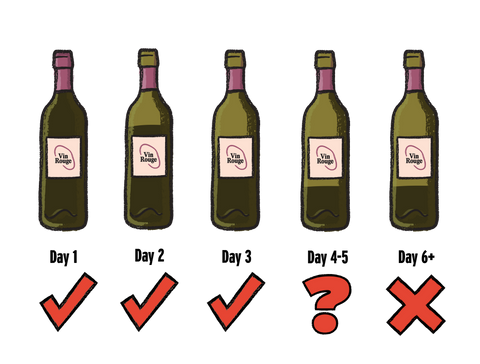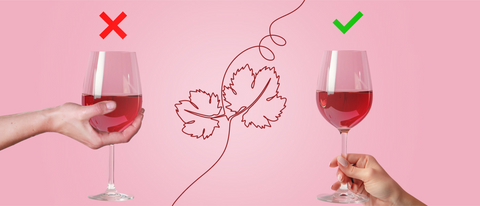The age of a grape vine is a significant factor in shaping the character and complexity of the wine it produces. Young vines contribute vibrancy and fruit-forward notes, while older vines bring depth, concentration, and a nuanced expression of terroir. This article explores the intricate relationship between vine age and wine flavour, considering the interplay of vine development, soil composition, and climatic influences.
The Maturation of the Vine: A Journey of Development
A grape vine's life cycle significantly impacts its fruit production and, consequently, the resulting wine.
-
Young Vines (3-7 years): In their early years, vines focus on establishing their root systems and developing a strong framework. They tend to produce higher yields of grapes, but these grapes often exhibit simpler flavour profiles. Wines from young vines are typically fruit-driven, fresh, and approachable, with less complexity and structure.
-
Prime Vines (8-30 years): As vines mature, their root systems deepen and expand, allowing them to access a wider range of nutrients and water in the soil. Yields stabilise, and the grapes develop more concentrated flavours and complexity. Wines from prime vines display a balance of fruit intensity, structure, and finesse.
-
Old Vines (30+ years): Vines that survive and thrive beyond 30 years are considered old vines. Their yields are naturally lower, but the grapes they produce are often more concentrated and expressive of the vineyard's terroir. Wines from old vines are renowned for their depth, complexity, intensity of flavour, and unique character.
Soil's Role: A Foundation for Expression
The soil in which a vine grows plays a crucial role in how its age influences wine flavour.
-
Nutrient Availability: Different soil types offer varying levels of nutrients. Young vines, with their developing root systems, are more reliant on readily available nutrients. Older vines, with their extensive root networks, can extract minerals from deeper soil layers, contributing to increased complexity.
-
Water Retention: Soil's water retention capacity affects vine stress. In well-draining soils, older vines are better equipped to withstand drought conditions, resulting in grapes with concentrated flavours.
-
Soil Composition and Flavour: The mineral composition of the soil can impart distinct characteristics to the wine. For example, limestone soils can contribute to minerality and acidity, while clay soils can enhance body and richness. Older vines, with their ability to access deeper soil profiles, can express these soil-derived nuances more profoundly.
Weather and Rainfall: Shaping the Vine's Response
Weather patterns and rainfall significantly influence grape development and wine flavour.
-
Temperature: Warm climates tend to produce riper grapes with higher sugar levels and fuller body. Cooler climates result in grapes with higher acidity and more delicate aromas. Older vines, with their established canopies, are often better equipped to withstand temperature extremes.
-
Rainfall: Adequate rainfall is essential for vine health, but excessive rain can dilute flavours. Older vines, with their deeper roots, can be more resilient to variations in rainfall, producing more consistent quality.
-
Vintage Variation: Weather conditions vary from year to year, creating vintage variation. Older vines tend to exhibit greater vintage consistency, as their established root systems buffer them against short-term climatic fluctuations.
Red Wine Character: The Influence of Time
Red wines, in particular, benefit from the complexity and structure that older vines contribute.
-
Tannin Development: Older vines often produce grapes with finer, more integrated tannins, resulting in red wines with smoother textures and greater ageing potential.
-
Flavour Concentration: The lower yields of older vines lead to grapes with concentrated fruit flavours, often exhibiting greater depth and intensity.
-
Terroir Expression: Wines from old vines often showcase a more profound expression of the vineyard's terroir, reflecting the unique characteristics of the soil, climate, and location.
White Wine Nuances: Subtlety and Complexity
While red wines are often the focus of old vine discussions, white wines also benefit from the nuances that vine age brings.
-
Aromatic Complexity: Older vines can produce white grapes with more complex aromatic profiles, exhibiting subtle layers of fruit, floral, and mineral notes.
-
Acidity and Balance: The acidity in white wines from older vines can be more balanced and integrated, providing structure and freshness.
-
Textural Depth: White wines from old vines can possess a greater sense of texture and weight on the palate.
Key Features:
-
Young vines (3-7 years) produce fruit-driven, approachable wines.
-
Prime vines (8-30 years) offer a balance of fruit intensity and structure.
-
Old vines (30+ years) yield wines with depth, complexity, and terroir expression.
-
Soil composition and water retention influence vine stress and flavour development.
-
Weather and rainfall patterns create vintage variation, impacting wine character.
-
Older vines contribute to finer tannins, flavour concentration, and textural depth in both red and white wines.
FAQ's:
Q: What is considered an old vine?
A: Generally, vines older than 30 years are considered old vines.
Q: Do old vines always make better wine?
A: While old vines can produce exceptional wines, quality winemaking practices are also crucial.
Q: How does soil affect wine flavour?
A: Soil influences nutrient availability, water retention, and mineral composition, all of which can impart distinct characteristics to the wine.
Q: Which type of wine benefits most from old vines?
A: Red wines often benefit significantly from the structure and complexity that old vines contribute.
Q: Can the age of a vine be tasted in the wine?
A: While it's difficult to quantify vine age directly, the resulting wine can exhibit characteristics associated with older vines, such as greater depth, complexity, and terroir expression.




Comments (0)
There are no comments for this article. Be the first one to leave a message!